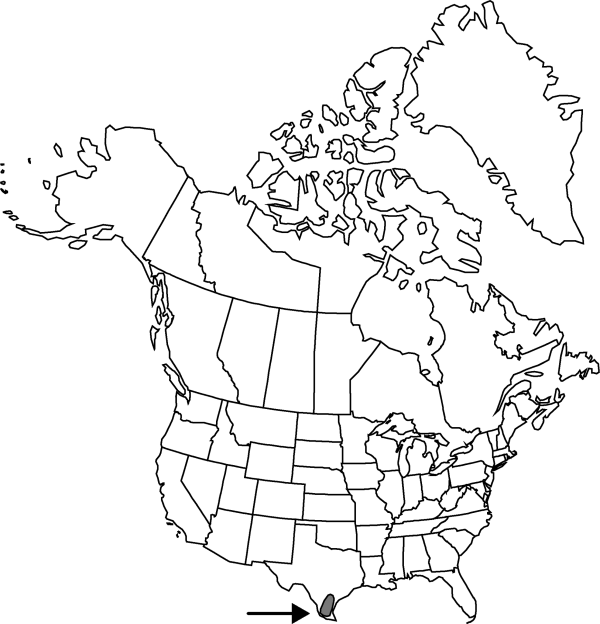Difference between revisions of "Abronia ameliae"
Wrightia 1: 54. 1945.
FNA>Volume Importer |
imported>Volume Importer |
||
| Line 8: | Line 8: | ||
}} | }} | ||
|common_names=Heart’s delight | |common_names=Heart’s delight | ||
| + | |special_status={{Treatment/ID/Special_status | ||
| + | |code=E | ||
| + | |label=Endemic | ||
| + | }} | ||
|basionyms= | |basionyms= | ||
|synonyms= | |synonyms= | ||
| Line 46: | Line 50: | ||
|publication title=Wrightia | |publication title=Wrightia | ||
|publication year=1945 | |publication year=1945 | ||
| − | |special status= | + | |special status=Endemic |
| − | |source xml=https:// | + | |source xml=https://bibilujan@bitbucket.org/aafc-mbb/fna-data-curation.git/src/bb6b7e3a7de7d3b7888a1ad48c7fd8f5c722d8d6/coarse_grained_fna_xml/V4/V4_120.xml |
|genus=Abronia | |genus=Abronia | ||
|species=Abronia ameliae | |species=Abronia ameliae | ||
Revision as of 00:12, 28 May 2020
Plants perennial. Stems procumbent to semierect, slightly to moderately branched, elongate, often reddish at nodes, viscid. Leaves: petiole 1–9 cm; blade deltate-ovate to elliptic, 2–8 × 2–6.5 cm, margins repand to sinuate, frequently undulate, adaxial surface glandular-puberulent, abaxial surface glandular-pubescent. Inflorescences: peduncle longer than subtending petiole; bracts ovate to elliptic, 5–16 × 2–10 mm, papery, glandular-pubescent; flowers 20–75. Perianth: tube magenta, 12–25 mm, limb bright magenta, 8–10 mm diam. Fruits narrowly turbinate, 6–9 × 3–4.5 mm, ± 2 times as long as wide, scarious, base attenuate, rounded or truncate at apex, with a broadly conic beak; wings 5, finely reticulate, thin walled, narrow, cavities extending throughout.
Phenology: Flowering winter–spring.
Habitat: Sandy soils, live-oak grasslands
Elevation: 0-100 m
Discussion
Abronia ameliae has limited cultivation as an ornamental in southern Texas.
Selected References
None.
